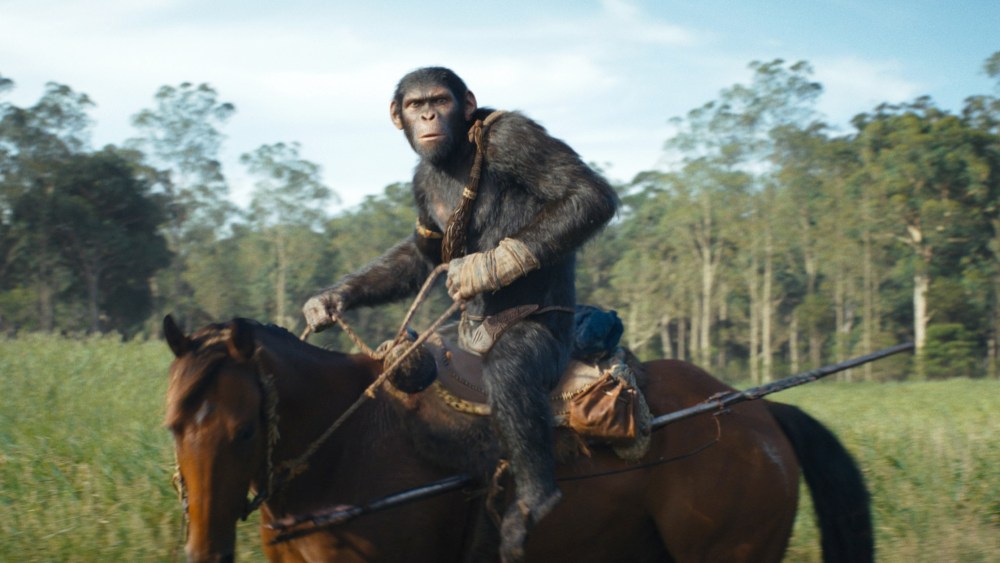The Collaborative Journey of “Kingdom of the Planet of the Apes”
Bringing a film to life is no small feat, and for “Kingdom of the Planet of the Apes,” it truly took a village of storytellers. At the heart of this sprawling production was Wētā Effects, a renowned visual effects house. With a staggering crew of over 1,000 artists, Wētā delivered an astounding 1,500 visual effects shots, showcasing a level of artistry and technological prowess that garnered accolades, including the award for Outstanding Visual Effects in a Photoreal Feature at the Visual Effects Society Awards. Buoyed by such recognition, the film now stands as a strong contender for an Oscar in the VFX category, highlighting the industry’s love affair with innovation and storytelling.
The Evolution of Performance Capture Technology
At a recent screening hosted by Variety and 20th Century Studios, VFX supervisor Erik Winquist shared insights that illustrate the technological advancements achieved since the last installment, “War of the Planet of the Apes.” Over a span of six years, performance capture technology has made significant strides. Winquist explained, “Instead of using a single camera on active spaces, we’re using a pair of cameras that allowed us to get a 3D mesh of their faces at 48 frames a second.” This leap provided animators with a wealth of data, enabling them to imbue the apes with even greater realism and detail.
A Shift in Communication and Storytelling
The narrative in “Kingdom of the Planet of the Apes” sees a pivotal shift: the apes, now the dominant species, converse in English, reflecting a world wherein most humans have been wiped out. Following Noa, a young chimpanzee portrayed by Owen Teague, audiences are thrust into a tale of self-discovery and resilience as he grapples with the loss of his village. Winquist underscored the challenge presented to animators: "All of that had to be worked through as a facial animation process." The meticulous focus on facial expressions and micro-movements turned each character into a vessel of emotion, captivating the audience at every turn.
Expanding Visual Possibilities
The film’s advancements in visual effects are not limited to character animations; the software utilized pushed the boundaries further than ever before. Winquist’s team faced the challenge of depicting additional elements, from natural phenomena like fire and water to intricate scenes featuring birds in flight. Fortunately, the team benefited from a robust framework for simulating water effects, thanks to their experience and familiarity with the necessary tools. Winquist’s confidence in his team’s abilities reflects the collaborative spirit essential in high-stakes filmmaking.
Director’s Vision and the New Frontier
Director Wes Ball, known for his work on “The Maze Runner” and the highly anticipated live-action adaptation of “The Legend of Zelda,” found his collaboration with Winquist and Wētā to be transformative. By setting the film 300 years in the future, he liberated the storyline from beloved characters, allowing the narrative to enter fresh territory. “It opened up so much new territory for us…and opens up a new door that we can explore moving forward,” Ball remarked, highlighting the opportunities for imaginative storytelling that lie ahead.
Blending Reality with CGI
One of the standout achievements of “Kingdom of the Planet of the Apes” is its ability to seamlessly blend CGI with real elements. Ball praised the integration, asserting, “There are CG horses standing next to real ones, and you can’t know the difference.” The fine-tuning of visual effects creates a compelling illusion that enhances viewers’ immersive experience, blurring the lines between the real and the fantastical.
Balancing Action and Emotional Depth
The production encountered challenges not only in high-intensity action sequences but also in crafting emotionally resonant quiet moments. One poignant scene depicts a dinner among the apes, each with their own subtext and motivations. Proximus, played by Kevin Durand, aims to bolster his power using ancient technology, while Noa longs for his family. Winquist emphasized the depth of the film’s visual landscape: “We have just over 1500 visual effect shots in the movie, and only 30 shots have no visual effects.” This staggering statistic showcases the extent of the involvement of visual technology, pivotal in conveying both grandiose action and intimate character moments.
Maintaining the Illusion of Reality
Ball further elucidated the importance of maintaining the illusion throughout the film. He explained, “What that means is that we have a complicated hold on the shot for a long time. You can’t break away.” This detail underscores the challenges faced by filmmakers: capturing uninterrupted performances while sustaining viewer engagement. The commitment to keeping the spell unbroken is crucial; any misstep could shatter the magic, pulling audiences from the rich world being woven on screen.
In “Kingdom of the Planet of the Apes,” the confluence of storytelling, technology, and artistry has birthed a cinematic experience that is both visually breathtaking and emotionally gripping. Every element, from the advanced VFX to the nuanced performances, converges to create a living world filled with tension, beauty, and profound implications about the future—placing it firmly at the crossroads of innovation and narrative depth.


